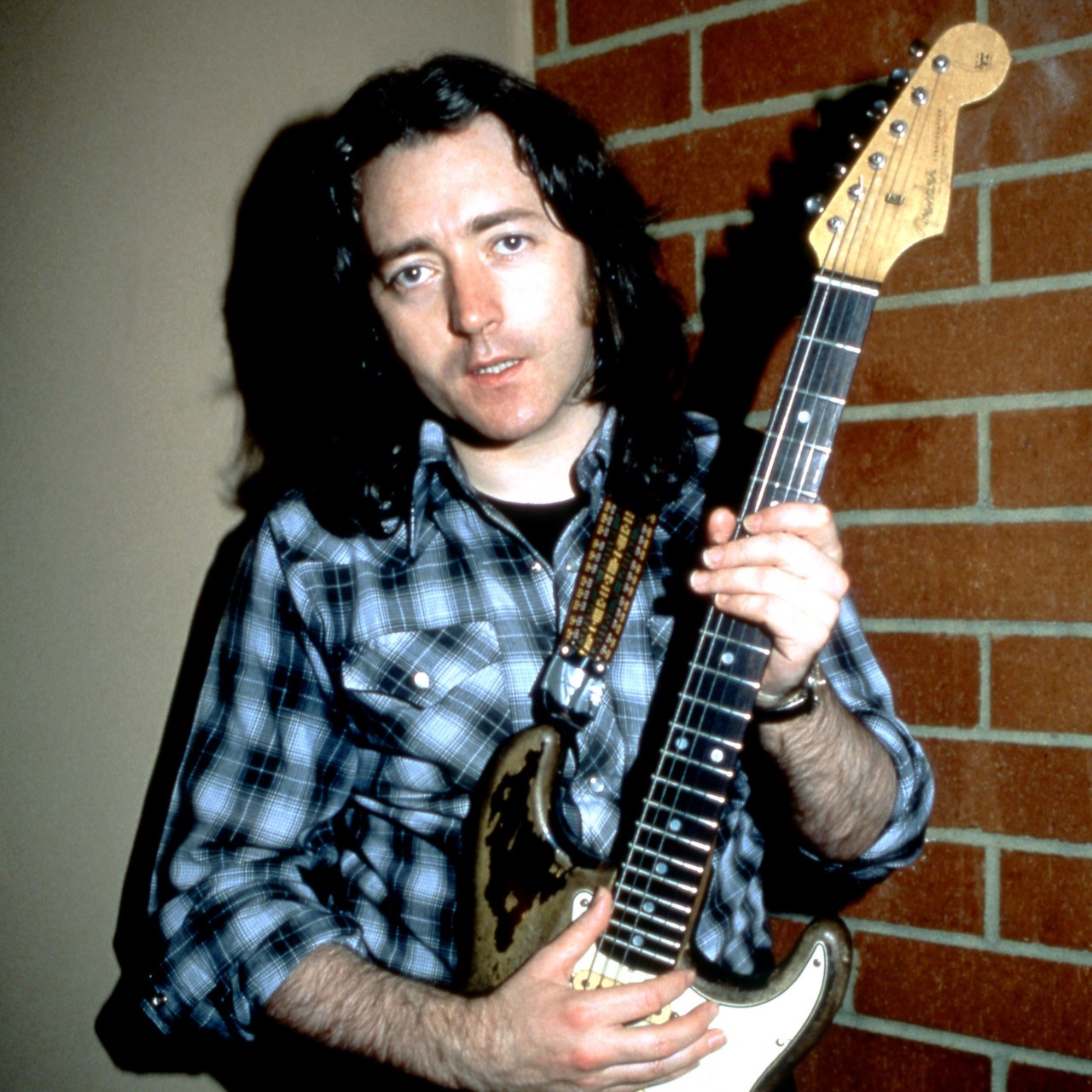Iconic Irish blues musician Rory Gallagher has been honored in Belfast outside of the legendary Ulster Hall venue with a statue. The monument honors his connection to the city.
Shop the best of Rory Gallagher’s discography on vinyl and more.
The life-sized statue is located outside of the venue he played regularly. It was crafted by sculptors Anto Brennan and Jessica Checkley of Bronze Art Ireland and David O’Brien of Bronze Art Ireland.
Inspiration for the tribute came from a 1972 Melody Maker magazine cover shot of Gallagher onstage at Ulster Hall.
Born in Ballyshannon and raised in Cork, Gallagher moved to the city where his statue now presides in 1967 Belfast. The statue was revealed on the 30th anniversary of the artist’s death.
Rory began to whip up a storm with his guitar sorcery when he co-founded the trio Taste in 1966. He was a mere 18 at the time.
When the band started to go international, a couple of years later, they won admiring glances from fans of Cream (for whose famed farewell Royal Albert Hall concert they opened) and Blind Faith, the short-lived supergroup on whose North American dates they also guested. In August 2015, the four-CD I’ll Remember box set celebrated Taste’s legacy.
Taste only lasted until 1970 themselves. But by then, they had played at that year’s Isle of Wight Festival and made two studio albums. The second, On The Boards, was a Top 20 success in the UK. Gallagher swiftly started recording in his own name under a new solo deal with Atlantic. He made the Top 40 with his self-titled 1971 debut, and a swift follow-up, Deuce, arrived the same year.
They were the first in a long line of releases to win either silver or gold certification. It’s appropriate, too, that the sole Gallagher album to make the UK Top 10 was one on which his celebrated, blistering style as a stage performer was commemorated, on 1972’s Live In Europe. That also enjoyed by far his longest chart run, at 15 weeks. The next year, Rory won his initial US album chart appearance with Blueprint.
Never one to court fame for its own sake, Gallagher continued to enhance his awesome reputation. His prolific recording and touring schedule went on for the rest of his life. His last studio album, his 11th, was 1990’s Fresh Evidence. He was a cruelly young 47 when he died after complications from a liver transplant on June 14, 1995. At the time of his death, he had plans to tour the record, release an EP and more besides.
But it was always all about the music for Rory Gallagher. “Regardless of fashions there are still blues and rockabilly fans,” he told Chris Welch in Metal Hammer in one of his last interviews. “Certainly for a while, the press overlooked rootsy music [which] they thought was old fashioned and irrelevant.
“But what I’m trying to do,” he continued, “is create music that respects the roots, but is based on new material as opposed to just me doing old blues, acid rock standards all the time. That’s the key really, to update the music itself by hitting it on the head, and coming up with new chord changes and tunes.”
Listen to the best of Rory Gallagher on Apple Music and Spotify.



